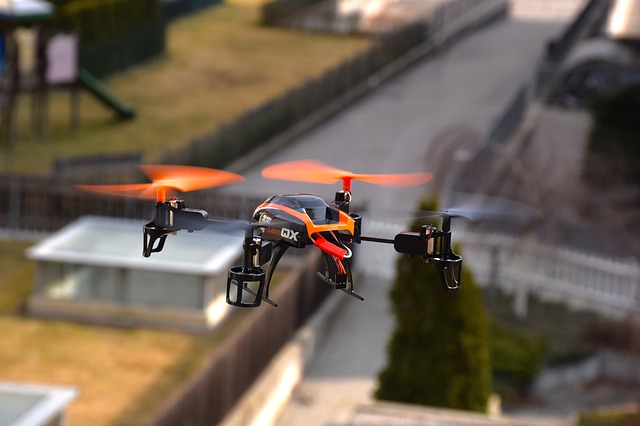Drones as a Service DaaS
Contents |
[edit] Introduction
The general term 'drone' refers to robotic vehicles. However, it has come to be associated more specifically with unmanned aerial vehicles (UAV). These devices range in size from full-scale aeroplanes or helicopters, to small hand-held vehicles similar to the model aircraft used for recreational purposes.
[edit] Drones in construction
Drones have been developed for a number of civil applications. In the construction industry, they can give relatively easy access to large or difficult sites or to large, complex or tall structures.
Inspection attachments can include cameras, laser scanners, lidar scanners, thermal cameras or a combination of such sensors.
Their set up costs are generally low compared with other types of equipment. However, there are dangers associated with flying aircraft, as well as public concerns about privacy. In addition, drones have limited payload capacity and may be difficult to operate in poor weather conditions, or where there is poor visibility.
[edit] Financial considerations
In some instances, strict requirements for operating drones make it necessary for companies to use service providers. In these situations, organisations may wish to hire the equipment and supporting expertise on an ‘as needed’ basis. This arrangement, sometimes referred to Drones as a Service (or DaaS), allows clients to forgo investing in the purchase of drone equipment and paying to train their own personnel to the necessary level. Instead, DaaS is designed to be available on demand, so clients only pay for the technology when it is used.
DaaS includes equipment, services and software selected by the customer. It can be paid for as needed or on a monthly subscription basis (or other type of pre-arranged schedule). Some DaaS providers also offer rent-to-own options, which could be a possibility for smaller firms (or new companies) that require additional time to evaluate an investment in the technology or have cash flow considerations.
[edit] Related articles on Designing Buildings
Featured articles and news
RTPI leader to become new CIOB Chief Executive Officer
Dr Victoria Hills MRTPI, FICE to take over after Caroline Gumble’s departure.
Social and affordable housing, a long term plan for delivery
The “Delivering a Decade of Renewal for Social and Affordable Housing” strategy sets out future path.
A change to adoptive architecture
Effects of global weather warming on architectural detailing, material choice and human interaction.
The proposed publicly owned and backed subsidiary of Homes England, to facilitate new homes.
How big is the problem and what can we do to mitigate the effects?
Overheating guidance and tools for building designers
A number of cool guides to help with the heat.
The UK's Modern Industrial Strategy: A 10 year plan
Previous consultation criticism, current key elements and general support with some persisting reservations.
Building Safety Regulator reforms
New roles, new staff and a new fast track service pave the way for a single construction regulator.
Architectural Technologist CPDs and Communications
CIAT CPD… and how you can do it!
Cooling centres and cool spaces
Managing extreme heat in cities by directing the public to places for heat stress relief and water sources.
Winter gardens: A brief history and warm variations
Extending the season with glass in different forms and terms.
Restoring Great Yarmouth's Winter Gardens
Transforming one of the least sustainable constructions imaginable.
Construction Skills Mission Board launch sector drive
Newly formed government and industry collaboration set strategy for recruiting an additional 100,000 construction workers a year.
New Architects Code comes into effect in September 2025
ARB Architects Code of Conduct and Practice available with ongoing consultation regarding guidance.
Welsh Skills Body (Medr) launches ambitious plan
The new skills body brings together funding and regulation of tertiary education and research for the devolved nation.
Paul Gandy FCIOB announced as next CIOB President
Former Tilbury Douglas CEO takes helm.
UK Infrastructure: A 10 Year Strategy. In brief with reactions
With the National Infrastructure and Service Transformation Authority (NISTA).























